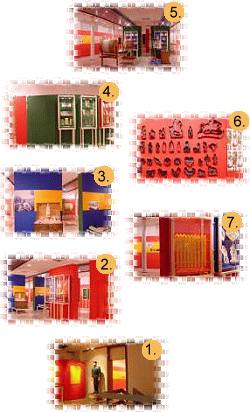| Bee-keeping
This economic activity involves keeping bees for honey, wax, pollen,
royal jelly, bee glue (propolis) and poison, for spreading pollen among
insect-pollinated plants, or as a hobby.
Bee-keeping is one of the oldest human economic activities. At first
people took honey from wild bees, later they took up forest bee-keeping,
and finally they domesticated bees.
Bee-keeping evolved as early as in the Stone Age, and is recorded in
cave mural painting. The Slavic peoples were probably involved in bee-keeping.
The first reliable sources showing this activity in Slovenia date back
to the 13th century, when special duties on beehives were introduced.
Various types of beehives were used by the s: hollowed logs
and troughs, straw or wicker baskets, hives made of boards (also called
kranjiči), and hives with removable honeycombs, the most common of which
were the Alberti-Žnidaršič hives. The small boards at the front of the
hives made of boards were sometimes decorated, making the typical
panjska končnica. There are also some examples of beehives in human or
animal shapes.
The first record and picture of a beehive in Slovenia date back to
the 17th century and can be found in Valvasors chronicle Die Ehre des
Herzogthums Crein.
The dominant bee species, found across the whole of Slovenia, is Apis
mellifica carnica (the Carniolan Honey Bee), which got its official name
after 1850. Due to its qualities it was exported across Europe and also
to other continents.
Two of the bee products - beeswax and honey - prompted the emergence
of the honey-bread bakers and chandlers crafts.
|



